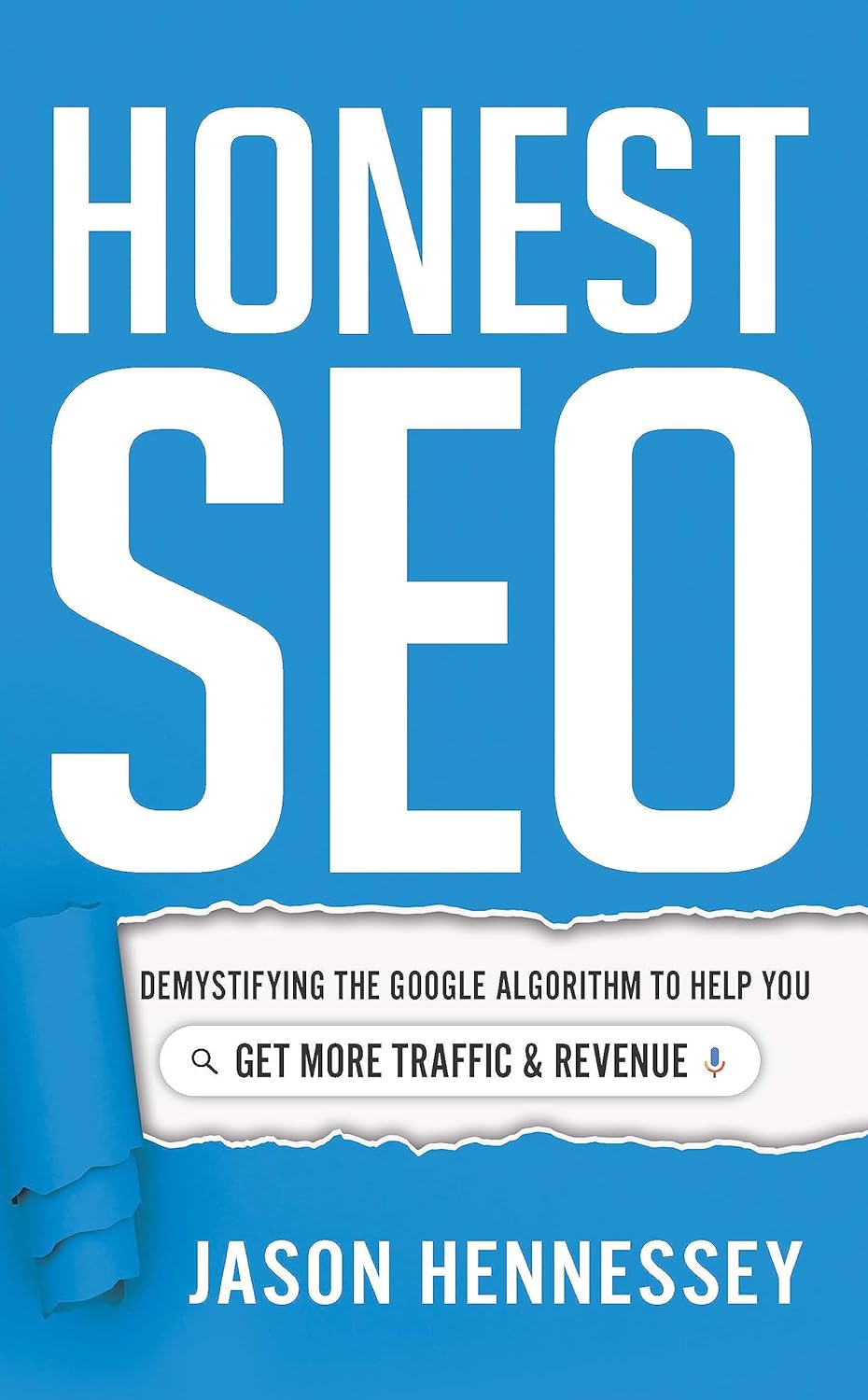
Honest SEO: Demystifying the Google Algorithm To Help You Get More Traffic and Revenue by Jason Hennessey contains useful SEO info. It covers SEO strategy, content strategy, link-building, technical SEO, local SEO, and more. I appreciate Hennessey's "honest" approach, desiring to rescue the SEO industry from its reputation for slimy snake oil sales. Each chapter ends with tips and takeaways which summarize the chapter.
Hennessey says you need a team of people with a variety of skills to do SEO well. It's true that that will provide the best results, but even 1-2 skilled people can provide worthwhile SEO gains.
My rating: 4 of 5 stars
Below are my notes from the book.
Note: This page contains affiliate links. As an Amazon Associate, I earn from qualifying purchases. Please see Affiliate Disclosure.
Google's algorithm values site elements that provide positive UX, attract new viewers, and keep people browsing.
Technical SEO refers to making site easy for search engines to crawl.
Pillar page: Page focused on single topic, with 1k-10k words, linked to by other in-depth pages on topic (cluster content). Goal is to build most authoritative resource about topic.
Use Google's "people also ask" feature to find content ideas.
Make pages relevant to local area by referencing local companies you've worked with, linking to local companies. Each location-based page must have unique content.
It's OK to pay administrative fee to a site for their time to review and publish your guest post; that's not buying link.
SEO is best, most reliable marketing channel; Google has most leads in world.
A link to your site is best, though there's some value in co-citations (site mentions you without linking to you) and co-occurrences (site mentions keywords related to you without linking to you).
Share press coverage on social media to get more attention and spread it.
Use press coverage to get more interviews and press coverage; show media you're worth covering.
Use multiple PR services because they syndicate to different news outlets (PR Newswire, Accesswire, PRWeb, 24-7 Press Release).
Post press release to your site before syndicating it, so that media links to your site and Google indexes it.
Have dedicated section of site that includes all press releases.
Optimizing more than 1 page for same keyword can cause them to cannibalize each other; search engine doesn't know which to index, so it doesn't index either one.
Google Business Profile guidelines say profiles are only for businesses that have physical location that customers can visit, or that travel to customers.
If you work from home office, you can set up service area business with hidden address, but it's very difficult to rank in Google Maps for competitive keywords.
Don't embed YouTube videos in site, because many users use video to jump from your site to YouTube. Keep users on site by using a video service that doesn't link to other sites (e.g., Wistia).
Post videos to multiple video hosting sites, including YouTube, because they attract different viewers.
You can buy Honest SEO: Demystifying the Google Algorithm To Help You Get More Traffic and Revenue as an ebook or book on Amazon.
This book is a great place to start in optimizing your site for search engines, but if you don't have the time or experience to handle SEO for your site, contact us so we can put our years of SEO experience to work for you.